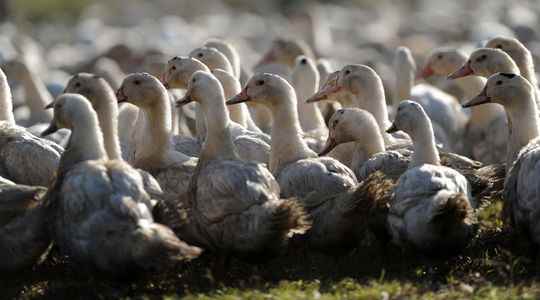This winter, you will hear again about the flu, containment measures and the number of victims. From this virus which strikes poultry, weakens breeders, stirs up trade tensions and accentuates food inflation. As the spread of avian flu accelerates, becomes more contagious and becomes endemic, three dimensions call for a serious reaction.
First of all, avian flu, which originates from migratory birds, is becoming globalized, affecting more and more countries. This is the case for China, Canada, the United States, Algeria, South Africa and half of the Member States of the European Union. Concern is spreading to Brazil, the third largest chicken producer in the world but above all the leading exporter of this white meat. In addition to the millions of poultry affected, the zoonotic risks are also beginning to shake the scientific community, which is more vigilant than ever about these transmissions from animals to humans. Thousands of cases of bird flu have been identified in individuals in Asia since the beginning of this century. These viruses mutate rapidly because of their eight strands of ribonucleic acid (RNA). By way of comparison, coronaviruses, which contain only a single strand of RNA, are small players…
A French vaccine
This brings us to the subject of vaccination. Given the international rules in force, a country must declare its cases of avian flu, thus causing a stoppage of its exports. This also means that imports from this country, at the same time, can increase to compensate for local production losses, since ducks, gallinaceans or other chickens that are contaminated or likely to be contaminated are slaughtered. These mass killings, necessary or preventive, aim to stem the virus and push back the pandemic specter. The export therefore closes for the affected countries, except to be able to establish zoning and guarantee that these poultry have been well protected. This is where standards and regulations sometimes fuel geoeconomic battles. To vaccinate is paradoxically to sow doubt in the international market. However, the amplification of avian flu requires a review of this posture. In China, the authorities now authorize vaccination, scalded by African swine fever which has decimated millions of pigs since 2019, for lack of medical solutions. In the United States, where an explosion of avian flu cases is feared, 200 million doses of the vectorized vaccine for chickens have been purchased to constitute strategic stocks in order to respond quickly to the problem when it occurs on a large scale. Another more recent vaccine, dedicated to ducks, is based on a messenger RNA.
These two new generation vaccines are French. Our country, as often, has innovations but hesitates to use them or takes time to approve them. It is completely legitimate to carry out the required scientific tests and to respect the marketing protocols in this medical sphere. However, a race against time is launched to be able to fight against the amplification of avian flu, the cost of which for the State has risen to more than one billion euros to compensate this year for the economic losses of these poultry sectors. The vaccine strategy, as a whole, from production to the mobilization of veterinarians and the logistics to be planned, would be ten to fifteen times less expensive. Italy or the Netherlands are taking a close interest in this vaccine. It is likely that the European domino effect will then be activated, with a common policy in this area if a Member State moves and authorizes this promising medical solution. Hurry up. The government will have to make a decision in order to be able to act from mid-2023 and thus hope to significantly reduce slaughter in 2024.
For 2023, it is already too late. In Vendée, Brittany or the South-West, 22 million poultry were slaughtered, almost half of which were sacrificed without knowing whether or not they were carrying the virus. Psychological and financial shocks for breeders, whose profession is already complex and intense in labour, and inevitable impact for the consumer, who must understand that letting waterfowl frolic in the open air increases the risks with nature. France should avoid shortages. But the prices will undoubtedly be raised. In the medium term, the problems of volume and therefore of availability arise if this avian flu decimates in turn poultry, breeders and public finances. And the following question would arise: give up this product or accept that it has been vaccinated? Of course, there will always be the possibility of importing (even more) poultry from abroad, from Ukraine, the United States or Brazil. But isn’t this contradictory with the objective of strengthening France’s agricultural and food sovereignty?
